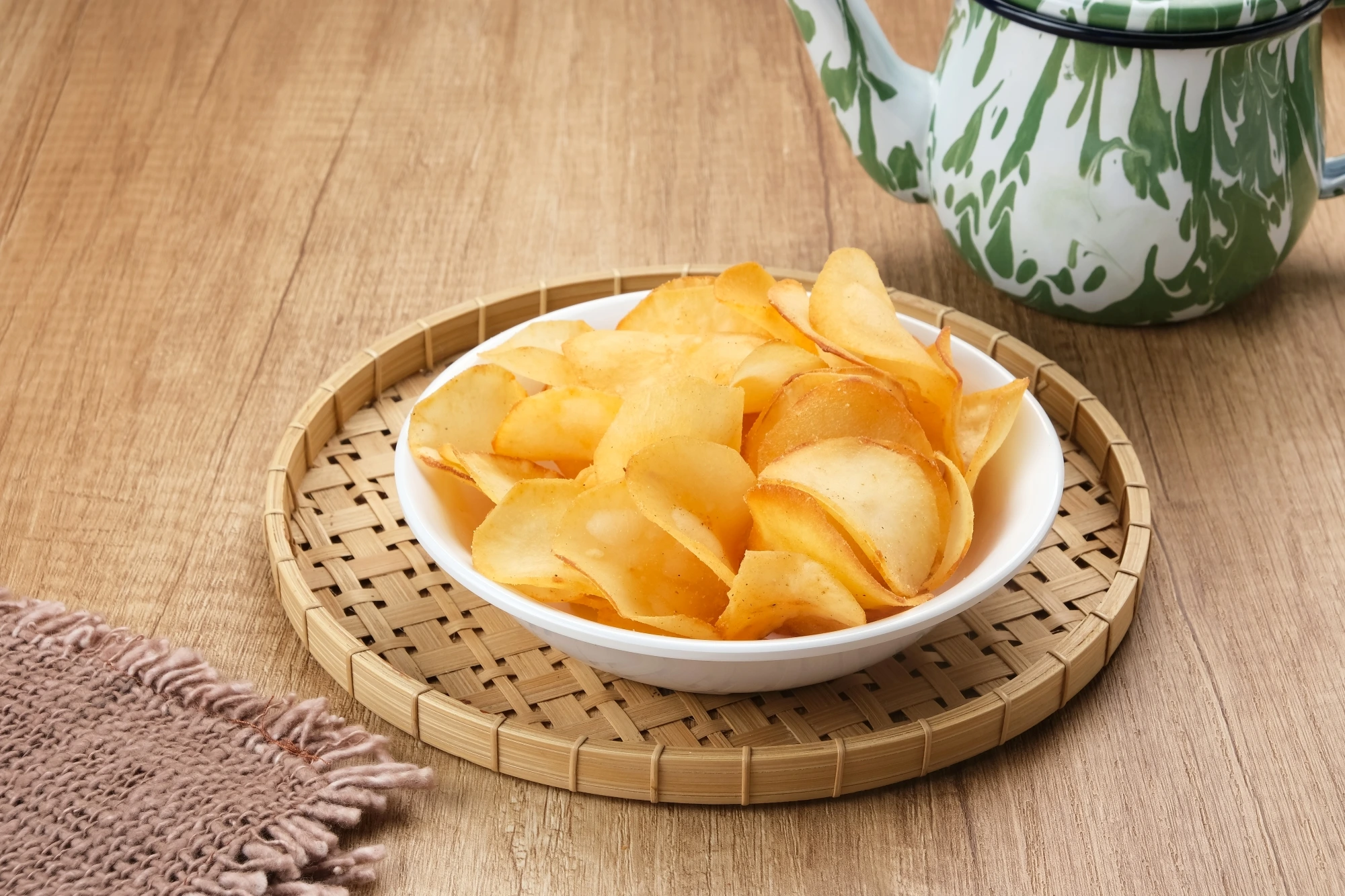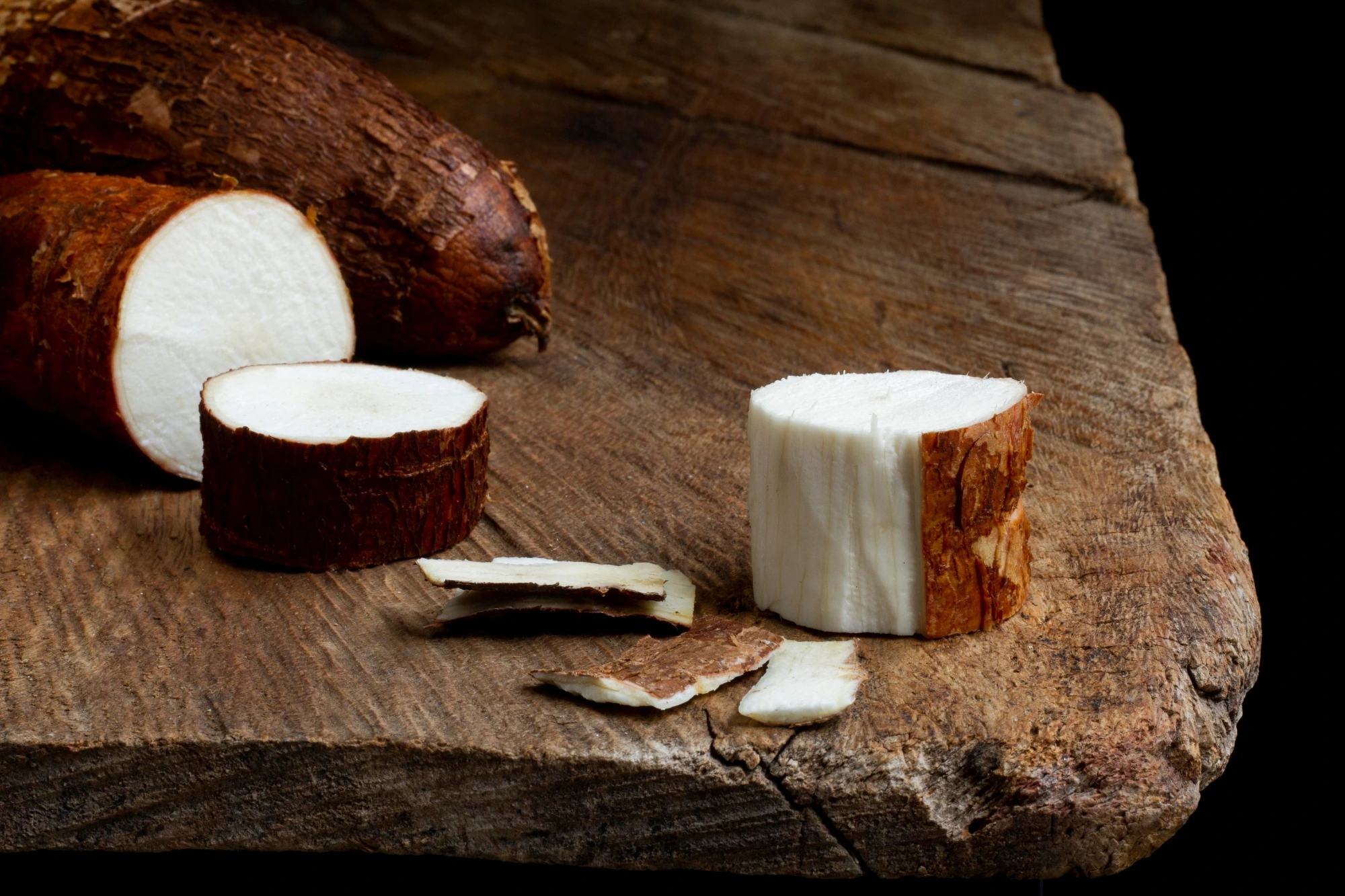 Who can resist cassava chips? This snack is truly a favorite for many because of its savory, crispy taste that’s perfect to enjoy anytime. But have you ever tried making cassava chips at home, only to end up with chips that are hard, quickly become soggy, or just don’t taste right? Well, the problem might not be in the way you process it, but in the choice of cassava.
Who can resist cassava chips? This snack is truly a favorite for many because of its savory, crispy taste that’s perfect to enjoy anytime. But have you ever tried making cassava chips at home, only to end up with chips that are hard, quickly become soggy, or just don’t taste right? Well, the problem might not be in the way you process it, but in the choice of cassava.
The fact is, not all cassava is suitable for making chips. There are certain types of cassava for chips that are better suited in terms of texture and flavor. To avoid choosing the wrong one and make your homemade chips tastier, let’s get to know the right types of cassava for chips. Keep reading until the end!
Types of Cassava for Chips
 Here are the most recommended types of cassava for chips, known for their ideal texture, low water content, and delicious taste:
Here are the most recommended types of cassava for chips, known for their ideal texture, low water content, and delicious taste:
1. Golden Cassava
Golden Cassava is known for its golden-yellow flesh. This color is not only visually appealing but also indicates a high beta-carotene content. Its texture is dense and not too fibrous, making it perfect for slicing thinly and frying into crispy chips. Additionally, Golden Cassava has a slightly sweet flavor, so it can be enjoyed even without much seasoning.
2. Gajah Cassava
Gajah Cassava is a superior variety that features large tubers and a high starch content. Due to its high starch content, chips made from Gajah Cassava tend to be crispier and have a longer shelf life. It’s also easy to process and has a neutral taste, making it suitable for flavored chips like balado (spicy chili), cheese, or sweet and spicy varieties.
3. Manggu Cassava
Manggu Cassava has a soft texture but doesn’t become mushy when fried. That’s why it’s often used as a base for chips and other traditional cassava-based dishes. It also has a distinct aroma and savory flavor, resulting in tasty chips even with minimal seasoning.
4. Butter Cassava
As the name suggests, Butter Cassava has a yellowish hue and a richer, more savory taste compared to regular white cassava. When fried, chips made from this cassava look more appealing due to their bright color. Its not-too-hard texture creates chips that are crispy yet still pleasant to chew.
5. Mukibat Cassava
Mukibat Cassava is a grafted variety, combining two types of cassava to produce a plant with large tubers, a fast harvest time, and high starch content. These traits make it ideal for large-scale chip production. Chips made from Mukibat Cassava are typically crispy, not easily soggy, and have a neutral taste, which allows them to absorb flavors well for various chip seasonings.
6. White Cassava
Although it’s the most commonly found type in the market, White Cassava can still produce tasty chips if selected properly. Choose mature cassava with a firm texture. While the color may not be eye-catching, chips made from this cassava are still crispy and absorb seasonings well.
Read More: Often Get Hard Cassava? Try These Ways to Choose Soft Cassava!
Make Your Cassava Chips Tastier and Healthier with FiberCreme!
Picking the right kind of cassava is key if you want your chips to be extra crispy and tasty. But hey — chips aren’t the only yummy snack you can make from cassava! There are so many other treats you can try, like Thai cassava dessert or kue kacamata which can be made even better and healthier with FiberCreme.
FiberCreme is a versatile powder that’s high in fiber, low in sugar, and has 0mg cholesterol. It’s a great coconut milk alternative that still gives you that rich, creamy taste, but with added fiber and less fat. Win-win, right?
So come on, let’s get creative with cassava and FiberCreme! Find more recipe inspo on Instagram @FiberCreme_TV and the Ellenka YouTube channel.






0 Comments